Where do the red carpet looks go at the end of the night? This fashion archivist has a growing solution
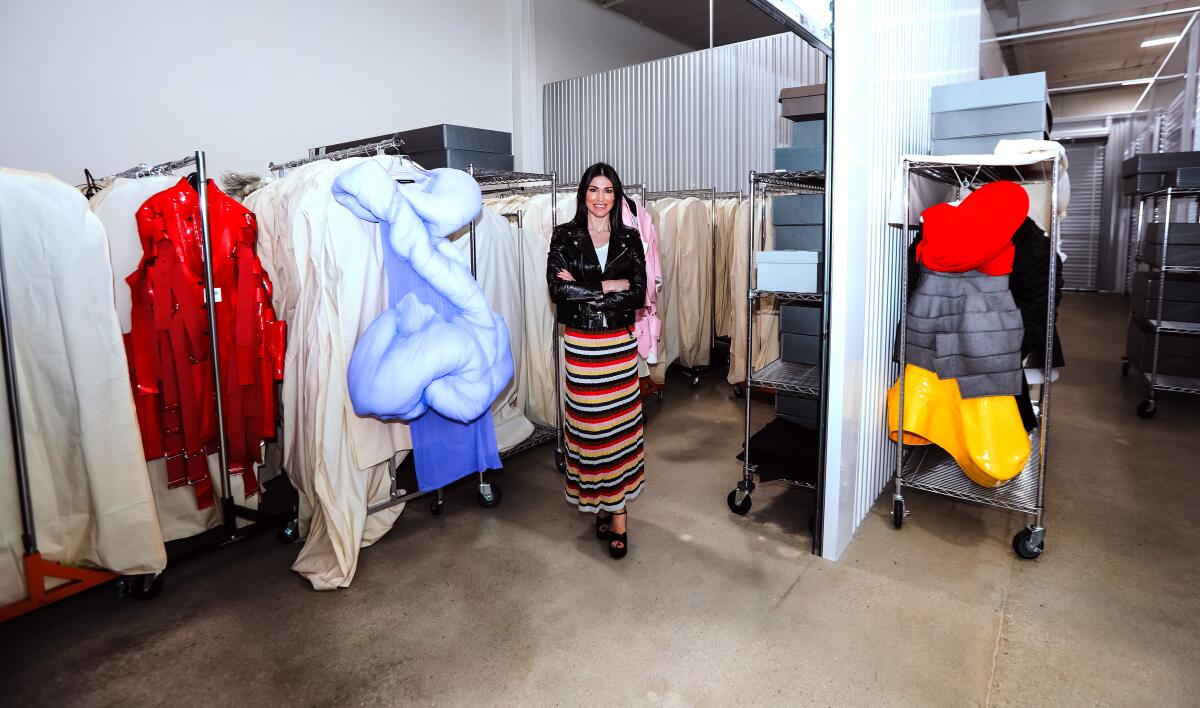
At the end of the night when the models have finished walking the runway, the celebrities have headed home after strutting the award show’s red carpet or the pop star’s tour has come to an end, what happens to the wardrobe? The answer isn’t always the same.
Sometimes a piece resurfaces for a new event. Sometimes it’s never seen by the public masses again. But while the pieces that shape pop culture and the art of fashion may no longer be put to use, they are often put into storage. It sounds simple, but it involves more than just a plastic tub shoved in the back of your closet.
Julie Ann Clauss runs a solution to the dilemma: the Wardrobe. Founded in 2011 in New York, the archival service has launched a Los Angeles location in the last year to store fashion pieces like garments, bags, jewelry, ephemera, shoes and more for celebrities and fashion houses.
The facilities are hidden to protect their contents. Inside the temperature-controlled warehouse are rooms with large shelves that reach close to the ceiling. The bottom section of the shelves contains racks where clothes hang — some concealed in bags and others peeking through with their vibrant colors and elaborate sleeves. Above the racks are shelves with stacked boxes of more garments.
The quality of the conservation is museum-grade, all the way to its air filtration system. The West Coast location has slowly launched and is now up and running. Clauss envisioned the newly birthed location as a place for entertainers to conserve their wardrobes, especially as fashion becomes a central part of pop culture.
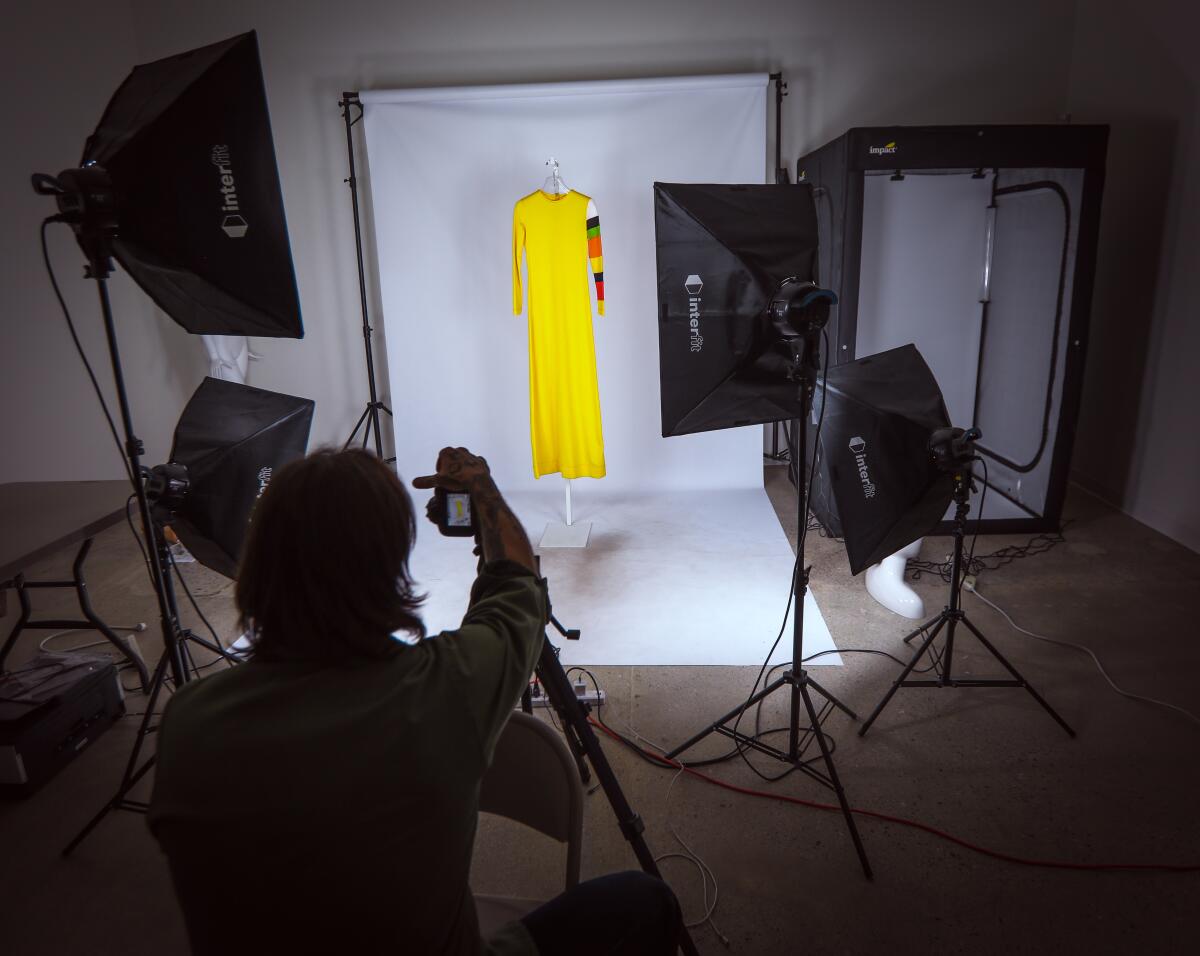
“Fashion is key to cultivating an entertainer’s image,” Clauss said. She pointed out that even Janis Joplin, a rock star whose image was counterculture with bohemian flair, had a stylist: Linda Gravenites. The stars we see today on stage and on the screen have a thoroughly executed image that needs a home once an era has been completed. This is where Clauss felt she could help.
Although Clauss has garnered plenty of popular clients like Calvin Klein, Marc Jacobs, Jason Wu and PVH with the Wardrobe, being an archivist wasn’t always in her career plan. She began as a fashion journalist who dreamed of writing for Vogue. When the opportunity came for an interview, she ended up not being a good fit. She questioned, What can I do to stand out?
That led her to a master’s program in fashion and textiles studies at the Fashion Institute of Technology. She thought, “I’ll be super well informed and will be a great writer.”
She later realized it didn’t quite matter. But while at FIT, Clauss gained the foundation of knowledge that would unknowingly lead her to archival work. She learned about fiber and textile science, how to care for clothes and how to mount an exhibition.
“I had to take college-level chemistry before I could get into the program, which, having been a writer, wasn’t something I was really interested in doing,” she said.
In 2004, Tom Ford left Gucci to start his own label. He later called FIT in search of an archivist, and the head of the program recommended Clauss.
“I wasn’t really sure that I wanted that job to be honest,” she said. The prior archiving experience she had wasn’t pleasurable. She recalled being stuck in a warehouse with no windows and the subtle aroma of urine. But she took on the job with Ford in 2008 and helped track down previous pieces he designed while at Gucci and archive it all under his brand. After about two years, she realized how important and impactful the work was.
“I thought, there have to be plenty of people in New York with beautiful clothes that they need help preparing for,” she said.
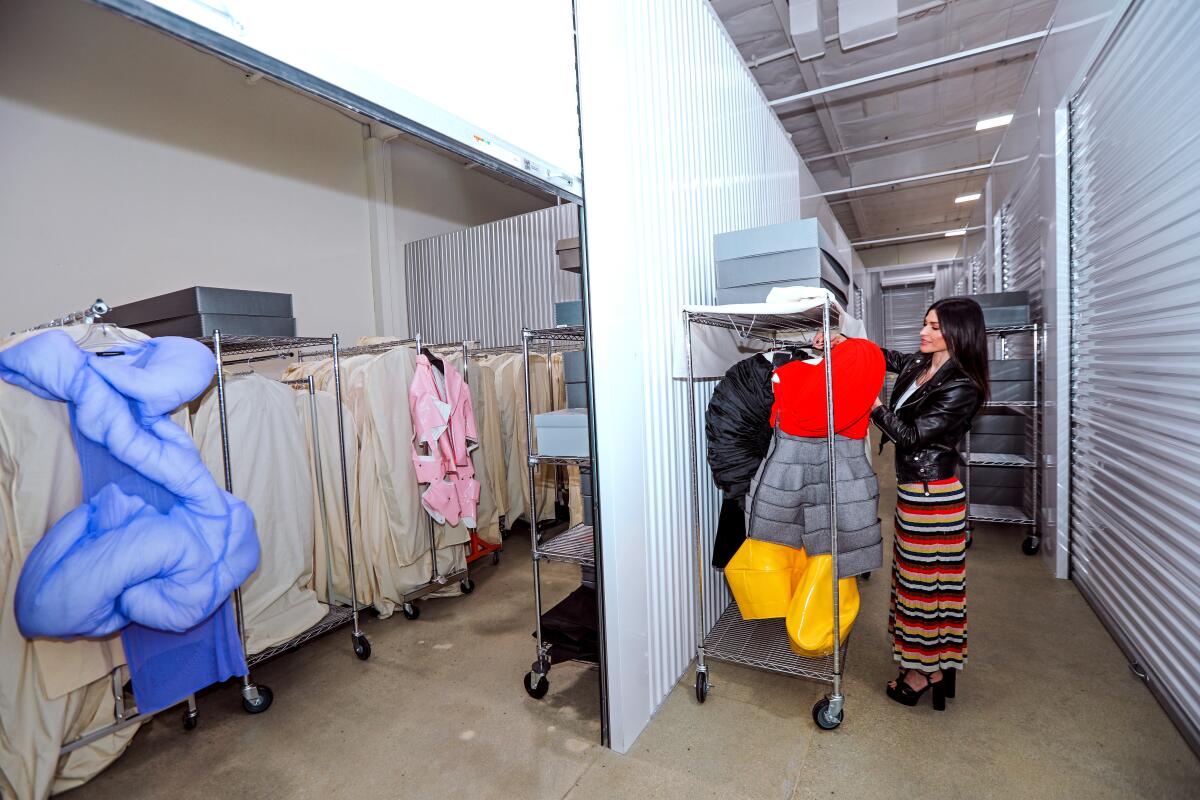
She decided to start her own business and asked Ford to be her first client. He agreed and still works with Clauss. The launch in 2011 coincided with Alexander McQueen’s “Savage Beauty” show at the Met, a pivotal exhibition that emphasized archiving’s importance by displaying everything from his 1992 postgraduate collection to his final runway show in 2010 shortly after his death.
“Designers started to really see, ‘Oh, we should probably hang on to these archives rather than sampling them or giving them to friends at the house as gifts,’” she said.
Clauss gained interest from entertainers in 2015, which she found exciting because she was particularly interested in the marriage of fashion, music and entertainment. Taking on these clients meant she had to fly from New York to Los Angeles to conduct her business. As her services grew in popularity, her flights grew more frequent— at least once a month and sometimes just for a day.
“I opened this building with the aim of expanding our base here and offering our services to more entertainers,” she said.
Her soft launch of the Wardrobe’s L.A. location is about eight months in the making, slowly moving West Coast clients’ holdings from New York and accommodating the facilities for archiving.
The Wardrobe is utilized by those in the fashion industry and those who simply love fashion.
Designer and stylist Rachel Zoe has been collecting fashion pieces for about 20 years. The Wardrobe approached Zoe to potentially help preserve her collection.
“I put a lot of precious historical designer pieces that I don’t necessarily wear that often, that I would never part with and really fear will get damaged over time,” Zoe said.
These include vintage pieces by brands like Halston, Oscar de la Renta and Givenchy. Each has special value to Zoe.
“There’s a uniqueness in historical pieces,” she says. “I love knowing who they belong to. I love knowing what collection they’re from. I love seeing them in fashion books.”
She adds, “I think knowing the history of a garment is all part of the process and the fun.”
Angela Feiner, a Wardrobe client, found the archiving entity via Instagram and saw it as the perfect opportunity to store garments that are out of rotation, but only for the moment.
“I look at it as a piece of art that maybe isn’t on my wall right now, but I’ll have it for the future,” Feiner says.
She recalls the dress she recently wore to her son’s bar mitzvah and makes a mental note that she wouldn’t be wearing it again soon, hinting at a possible addition to the Wardrobe.
“I have such regret when I look back at some of the pieces that I got rid of when I was younger,” she says.
Holding her pieces with the Wardrobe gives her peace of mind, especially knowing Clauss is familiar with how to care for them.
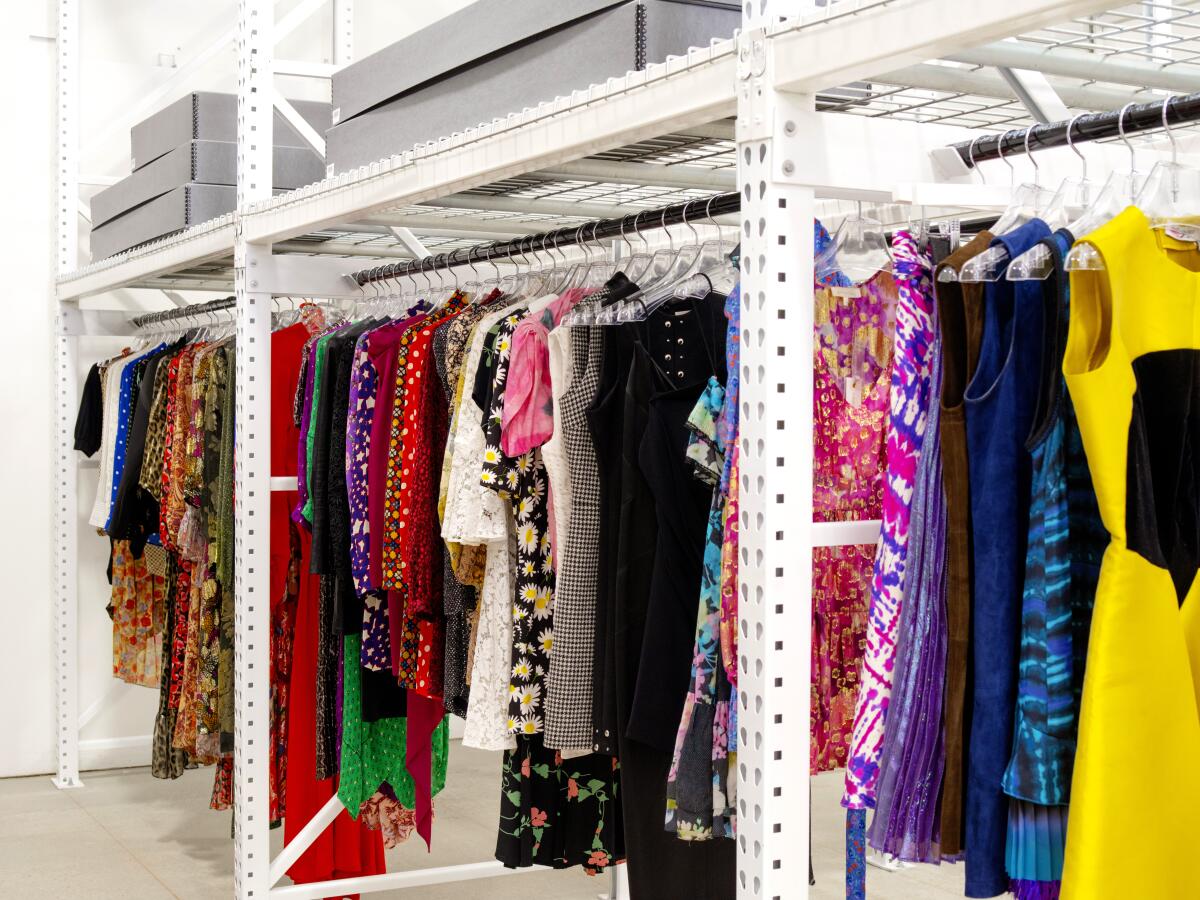
Clauss’ process involves, first, securing each piece. For designers, that means getting pieces back from showrooms or working with PR representatives to track the piece’s location. For entertainers, it means sifting through tour apparel and wardrobe to decide which pieces and ephemera need to be stored. Second, Clauss evaluates whether pieces need repairs or simply need to be cleaned. Then she documents it all with photos, recordings and images of its use on stage or the red carpet. Lastly, Clauss evaluates storage requirements.
She establishes if it needs to be hung and with what hanger, “thinking about how something needs to be supported as if it were on a body,” she said.
She looks at the shoulders to gauge padding. She thinks about the length of the hanger and the clearance from the hook. As she “gets sciency,” she discussed the use of clear hangers made of a proprietary blend that doesn’t release gasses that could discolor a garment or leach chemicals. Sometimes, hangers aren’t enough and the piece needs to be professionally mounted on a re-creation of the client’s body. Other times, garments are packed into a box with tissue padding, upholding a familiar shape of the body without it being pressed against other garments.
Her clients have used the archives to dress movies, red carpets and retail activations. It’s everywhere. That’s the beauty of fashion.
“I think fashion is a lot less intimidating than fine art,” Clauss said. “Everybody interacts with fashion in their everyday lives.”
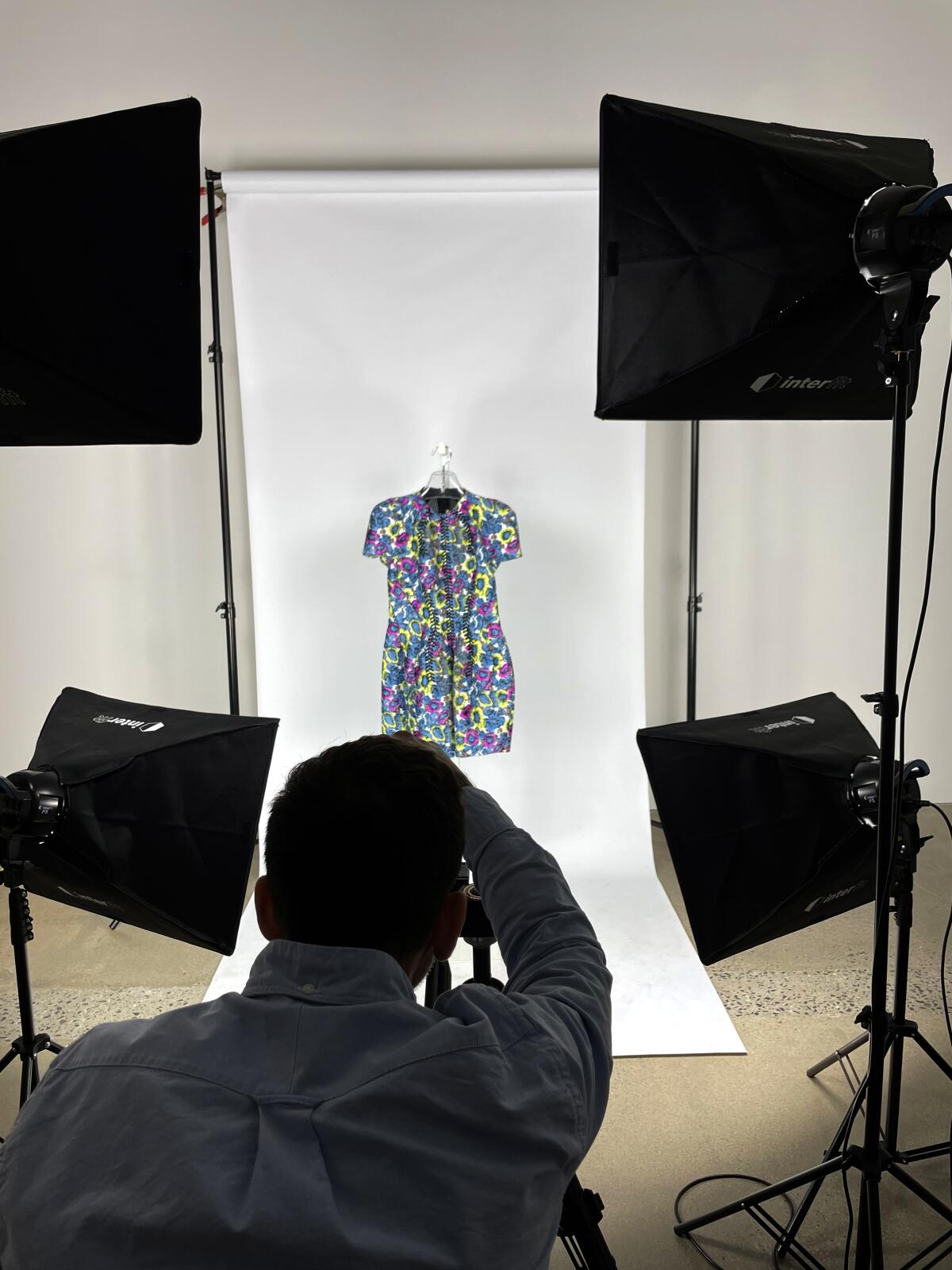
She contemplated her own explorations with fashion growing up, leaning toward the classic rock looks, like Joplin. Fashion is more than the runways for Clauss, it’s a form of self-expression. She grew up gravitating toward vintage, a trend that is rising with younger generations as the internet opens catalogs of fashion at their fingertips. The trend is also seeping into fashion houses.
“Certain brands are starting to sell archival pieces,” she said, pointing to Oscar de la Renta’s Encore as an example. “It underscores the importance of quality in fashion and not investing in throw-away pieces that are polluting the planet.”
Anna Wintour preached the power of vintage and passing on clothes. The mentality shift has proven Clauss’ business venture important to the fashion industry.
Clauss, who once yearned to work for Vogue, is now in the headlines of Vogue for her archival work. As her business in L.A. grows, she hopes to help entertainers leverage their collections and preserve the historical moments of pop culture by caring for them on the shelves of the Wardrobe and preparing for the next time they are worn in front of fans.
“There is tremendous value in it, and I’d love to see the building filled with incredible tour fashion,” she said.
More to Read
The biggest entertainment stories
Get our big stories about Hollywood, film, television, music, arts, culture and more right in your inbox as soon as they publish.
You may occasionally receive promotional content from the Los Angeles Times.











